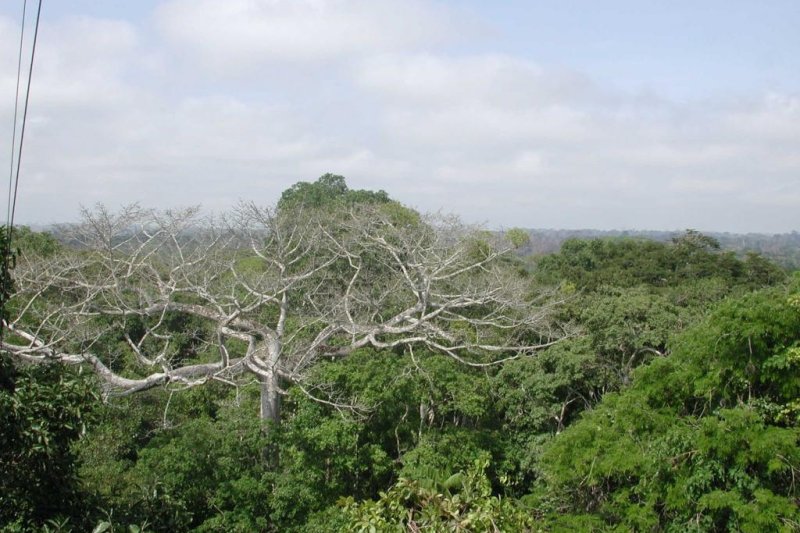Heat and water stress during drought conditions causes trees in the Amazon to lose their leaves. Photo by NASA/JPL-Caltech
Aug. 9 (UPI) -- Longterm damages caused by drought are curbing the carbon capturing abilities of the Amazon, according to analysis by scientists at NASA's Jet Propulsion Laboratory.
Under normal conditions, the Amazon -- Earth's largest tropical forest, comprising 2.3 million square miles -- is a natural carbon sink. Carbon is captured by photosynthetic activity and stored in leaves, branches and bark.
But when periods of drought and intense heat harm forest health, the Amazon can release more carbon than it pulls in. That's what happened between 2005 and 2008, according to satellite lidar data analyzed by NASA researchers.
"The old paradigm was that whatever carbon dioxide we put up in [human-caused] emissions, the Amazon would help absorb a major part of it," JPL scientist Sassan Saatchi said in a news release.
The newest findings -- published this week in the journal Nature Communications -- undermine the old paradigm.
Lidar data showed the Amazon lost 270 million metric tons of CO2 every year between 2005 and 2008. Though rains returned in 2006, the data suggests the damage done by the 2005 drought had longterm effects.
The Amazon faced drought conditions again in 2010 and 2015. As the planet continues to warm and rising carbon emissions alter Earth's climate, scientists expect extreme drought conditions to become more common across much of the globe.
"The ecosystem has become so vulnerable to these warming and episodic drought events that it can switch from sink to source depending on the severity and the extent," Saatchi said. "This is our new paradigm."
On-the-ground observations showed heat and water stress cause trees to drop their leaves, limiting their ability to absorb carbon. Field studies also showed taller trees are more likely to be killed in a dought.
Data collected by the Geoscience Laser Altimeter System aboard NASA's ICE satellite helped scientists measure the large-scale impacts of heat and water stress on the Amazon's canopy. The measurements showed significant defoliation in the wake of the 2005 drought. The loss of trees caused the average canopy height to drop 35 inches in the areas of forest most adversely affected by the drought.
Because transpiration -- the release of water vapor from tree leaves -- generates a large percentage of the Amazon's precipitation, droughts and their ill effects on forest health cause a negative feedback loop, prolonging drought conditions.
"With more frequent droughts expected in future, forests of Amazon may lose their role as a robust sink of carbon, leading to a significant positive climate feedback and exacerbating warming trends," researchers wrote.















